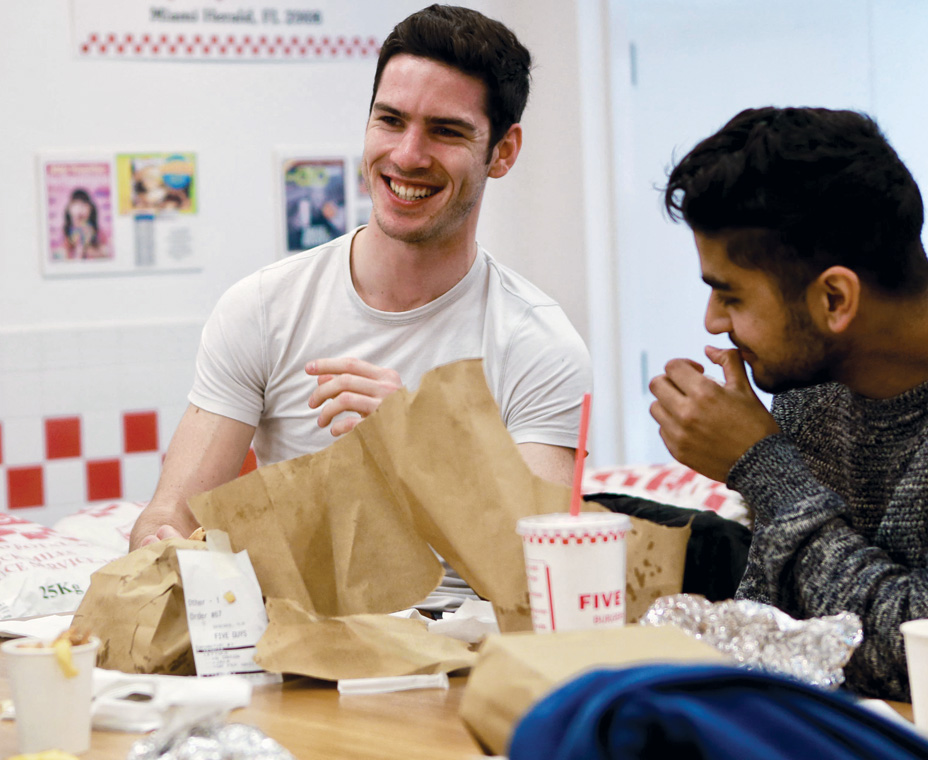Whether it was a pizza place, a taco stand, or another purveyor of feel-good food, the fast-food restaurant has long held a special place in American adolescence. It’s where teens worked and, until recently, where they played.
But in the last two years, quick serves and fast casuals have seen a plateau in teenage customers. Quantifind, a California-based data science company, identified the trend when some limited-service restaurant clients worried that their teen market wasn’t as strong as it once was. Josh Anish, Quantifind’s marketing director, dug deep into the data.
“We saw that it was really clear,” he says. “Teen [traffic was] building up for the first half of the decade, but it has plateaued while adults have spiked back up.”
Josh Reynolds, head of marketing and client consulting at Quantifind, has explored reasons for the stalled sales. Teens are spending less time at quick-service and fast-casual restaurants before and after school and during their lunch breaks, he says. Parents today are also less likely to take their kids to a quick serve for breakfast on the way to school, Reynolds says.
Health might also be playing a role in the teen traffic drop-off. Health-conscious friends can derail entire visits among teen groups to brands with fewer nutritious options. A menu that appeals to health-conscious consumers can make a big difference. “Center your brand around pleasure and joy, but give that complainer in the car something,” Reynolds says.
Not all brands are struggling with teens. Northern Virginia–based Five Guys isn’t exactly a health brand, but the quality of the food has made it the nation’s most popular brand among teens, according to Quantifind’s research.
Molly Catalano, vice president of marketing and communications at Five Guys, wasn’t surprised at that reaction. Customer ages are evenly distributed at Five Guys, she says, with about 20 percent per segment. People have many different reasons for coming to Five Guys, but the unifying factor is the food.
“Our food is fresh, and how we prepare it and what is in it is very transparent. I think people appreciate the homemade quality to it, as well, and then there’s the customization piece,” Catalano says. Ingredients at Five Guys are notable for what they don’t contain: coatings, preservatives, or additives. Fries are the only food cooked in the restaurants’ peanut oil, meaning that gluten-free customers can eat them, and lettuce and other vegetables are shredded and cut in-store.
Firehouse Subs, another brand highly popular with teens, reports a similar emphasis on quality—and similar rave reviews. Teens love the food at Firehouse Subs, according to Quantifind’s data, and CEO Don Fox says it makes sense.
“We pride ourselves on flavors and ingredients,” he says. “Whole-muscle proteins sliced-in house, choice-grade beef. We don’t talk about the nature of the ingredients a lot, but customers recognize it for the integrity.” Firehouse Subs also offers a line of subs that have fewer than 500 calories, which could appeal to both parents and teens.
Cross-generational appeal can be a boon to restaurants because parents come in with their kids. It can also increase brand loyalty. Firehouse Subs has offered a kids’ meal option featuring the same high-quality product for the past 14 years. Therefore, many teenagers grew up eating Firehouse Subs and progressed to more robust flavors as their palates evolved, Fox says.
To garner loyalty among younger consumers, businesses often turn to technology, but that’s only effective if it’s properly executed. Firehouse Subs offers several digital features, including online ordering and Apple Pay, but the bulk of its online presence focuses on human-interest stories.
Catalano also advocates for a subtler approach. Five Guys’ social media interactions are simple, focusing on customer questions and comments. But she says the sincerity comes through.
“Teenagers are social media–savvy, and they are also aware when someone is targeting them,” she says. “We engage with them in a really honest way, and they know that.”
Ensuring that teens feel welcome in the space can be important to the lunch and after-school crowd. Reynolds suggests stores consider adding free WiFi, which allows teens to maintain their constantly connected identities. “Make it easy for them to have a social experience, whether that’s social media or eating with friends,” he says.
To cultivate an inviting atmosphere, Five Guys offers free peanuts and plays an energetic mix of classic rock and contemporary hits. Catalano traces the teen-friendly atmosphere to the brand’s founding by four then-teenagers in the mid-1980s. The Murrell brothers wanted to listen to rock music while working, and they’ve continued that tradition while updating the selection.
Firehouse Subs aims to be a third place for teens with space to accommodate large groups and live sports on the TVs.
According to Quantifind, eating at home is a bigger competitor to teen business than another restaurant—thanks in large part to falling food prices, grocery stores’ improved take-away options, and the allure of in-home entertainment like Netflix.
But brands like Five Guys and Firehouse Subs prove that the teen market isn’t lost. “Stay true to your brand, stay true to your purpose,” Reynolds says.








